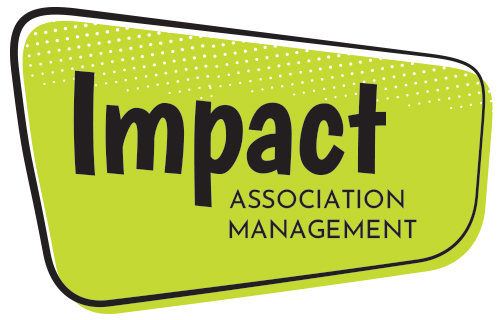Joining a Board of Directors can be a tricky decision. You are committing your free time to running an organization for the next year or two. You may also be hesitant as to what you are actually jumping into as a volunteer. As the current, Board of Directors, it is important to train your new members and provide background on the association. At Impact, we have a Board Orientation Outline that we provide for our clients. It ensures that the proper information is shared with new board members and nothing is left out. Here are a few essentials you should include on your Board Orientation Checklist!
An introduction. Take the time at the beginning of your orientation to thank the volunteers for their time and commitment to the organization. This will make them feel appreciated and needed and encourage them to jump right in!
History: Briefly go over how the organization came to be as well as any policies and procedures that are set in place.
Expectations. Share the association’s mission, vision, and core values. Explain how their new role falls in line with those values. It is also important to lay out a relatively accurate expectation for the time commitment involved with their role. Hopefully this was already discussed prior to their joining, but should be reemphasized. Lay out when meetings are, how many they should be attending, and more!
Membership. Include a breakdown of how many member types you have and how many members fall into each type. Discuss the ways in which you would like to grow each type and any discussions that have been made about potentially changing these memberships.
Strategic Plan. Now that you have covered the basics, it is time to get into the nitty gritty or what the group will be working towards. Communicate your strategic plan and allow for questions from your new board member.
Your new board member may be a little overwhelmed at first but the orientation is there to help them catch up to speed with the rest of the group. This could be presented as a document or a one on one between a current and new board member. It is important to be available for questions and encourage any suggestions of change from the new set of eyes. If the new board member has questions about something that was left out, add it to the outline for the next newbie!
If you are interested in seeing Impact’s Board Orientation Outline, email kristen@ImpactAMC.com!





